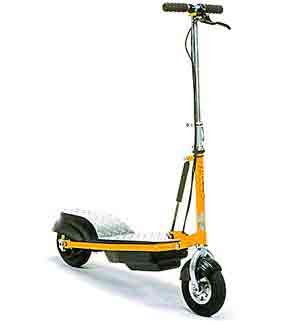electric cars
Titangeek wrote:
MyFutureSelfnMe wrote:
Titangeek wrote:
I was thinking about this earlier today, why not have a car with an electric motor on each wheel, but instead of batteries have them be powered by a gas/diesel/whatever generator, kind of like one a train. You could have as much hp as on a sports car, on what I guess counts as a hybrid.
Uh, you pretty much just described a hybrid, minus the direct drive from engine to wheel (do all hybrids even have this?). The only value to a hybrid is to avoid charging issues. Charging issues should only be a problem for a few more years.
I thought hybrids alternate between running off of battery powered electric motors, and switched to a small gas engine when more power was needed or the batteries died.
Sorry, I guess I'm referring to a "Series Hybrid".
Electric motors in hybrids generally produce more power across the band than the gas engine does.
sliqua-jcooter
Veteran

Joined: 25 Jan 2010
Age: 37
Gender: Male
Posts: 1,488
Location: Burke, Virginia, USA
MyFutureSelfnMe wrote:
It is removable as part of its design. Presumably the removal equipment stabilizes the car during the process, it shouldn't be an impressive feat to maintain stability with the car stationary.
But it's removable for replacement in cases of defective cells, not to swap it out in a quick-charge system. There's a biig difference. Over time removing and replacing that component *will* weaken it. Ultimately, the solution is to build EV charging stations in parking lots - especially large business/campus lots. People spend most of their days at work, and very few jobs require use of an employee's personal vehicle during work hours, so it's the perfect opportunity.
_________________
Nothing posted here should be construed as the opinion or position of my company, or an official position of WrongPlanet in any way, unless specifically mentioned.
There is no.direct linkage in most hybrids, rather you have a generator that makes alot more juice then the battries uptake, this excess while charging the battery goes to the electric motor, if more power is needed some are set to use the current from the batteries and the motor at the same time, emptying the battery while running the gen.
My idea is nice because everything could use different quantities of batteries that are cheap to.replace if they fail.
sliqua-jcooter wrote:
MyFutureSelfnMe wrote:
It is removable as part of its design. Presumably the removal equipment stabilizes the car during the process, it shouldn't be an impressive feat to maintain stability with the car stationary.
But it's removable for replacement in cases of defective cells, not to swap it out in a quick-charge system. There's a biig difference. Over time removing and replacing that component *will* weaken it. Ultimately, the solution is to build EV charging stations in parking lots - especially large business/campus lots. People spend most of their days at work, and very few jobs require use of an employee's personal vehicle during work hours, so it's the perfect opportunity.
Ok I wasn't clear on that, thought it was quick release. I don't think even with a 700 pound battery pack it would be impossible or even challenging to design a quick release mechanism with an MTBF of thousands of cycles. Compared to the other engineering challenges Tesla deals with, that's simple.
Never underestimate peoples' lack of or inability to plan ahead. It's possible that sometime in the future with 2400 volt service or some such, a 10 minute charge will be possible on an 80kWh battery pack. However I think batteries are going to shrink faster than electrical service is going to grow, and it really isn't that hard to put more than 200-300 miles on a car in a day.
ThanatosSigma wrote:
There is no.direct linkage in most hybrids, rather you have a generator that makes alot more juice then the battries uptake, this excess while charging the battery goes to the electric motor, if more power is needed some are set to use the current from the batteries and the motor at the same time, emptying the battery while running the gen.
My idea is nice because everything could use different quantities of batteries that are cheap to.replace if they fail.
My idea is nice because everything could use different quantities of batteries that are cheap to.replace if they fail.
You mean replacing individual cells if they go bad? Yeah, I do think there is some value to your idea. Especially if the mechanism can run very fast. There would be challenges (the cells couldn't be directly submerged in coolant, protection against fraud by people returning bad batteries whose onboard computers claim they are good, etc) but I can't picture anything insurmountable, and it would address the convenience factor.
| Similar Topics | |
|---|---|
| New cars and planned obsolescence |
17 May 2025, 4:21 pm |
| At least 11 NYPD police cars torched |
12 Jun 2025, 4:13 pm |







